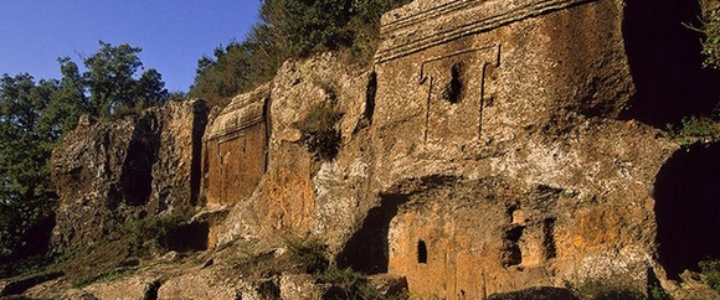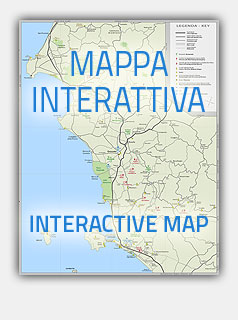
The area of the Necropolis characterized, unlike the other cave necropolis of Etruria, by a clear concentration of the tombs on the façade in an area of extension rather limited compared to the totality of the burial, occupies about 250 meters on the side North of the valley of the cold ditch, opposite to the end of the acropolis of the ancient village on which stands the medieval castle.
It is now ascertained, in fact, the identification of Castel d ‘ Asso with the ancient Axia cited by Cicero in the oration Pro Caecina.
The city, already existing in the archaic period, as evidenced by the discovery of some architectural terracotta datable to 550-530 B.C., flourished above all since the fourth century B.C., as the minor centre of the Tarquiniese territory.
In III B.C. It was submissive, like the whole area, to the Roman dominion, but, thanks to its position between the Via Clodia and the Via Cassia, it continued to enjoy a certain prosperity.
From the first imperial age, the decline began, until the site was abandoned in late antiquity, only to be inhabited again in the High Middle Ages: in the IX-X century there was built a castle of which remains some ruins.





 Home
Home Home
Home